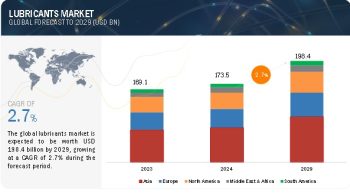
Glass fiber yarn is formed from continuous strands of glass fibers. Fiber spinning is a method in which molten glass is extruded through small holes to make thin fibers. These fibers are then woven together to make yarn. Glass fiber yarn has great strength and durability, as well as resistance to heat, chemicals, and moisture. It has high tensile strength and is frequently used as a reinforcing material in composites. The yarn can be woven or knitted into fabrics, wound into filaments, or incorporated into a variety of composite constructions to improve mechanical qualities.
The report “Glass Fiber Yarn Market by Fiber Type (E-glass type, S-glass type), Yarn Type (Single Yarn, Piled yarn), Application (PCB, Façade, Marble & Mosaic Tiles, Structural parts), End-use Industry and Region – Global Forecast to 2027″, is estimated to be USD 2.5 billion in 2022 and is projected to reach USD 3.5 billion by 2027, at a CAGR of 6.5% between 2022 and 2027.
Download PDF Brochure: https://www.marketsandmarkets.com/pdfdownloadNew.asp?id=85172065
During the forecast period, the electrical and electronics industry is predicted to have the biggest market share in the glass fiber yarn market. Due to their superior electrical insulating capabilities, high strength-to-weight ratio, and resilience to heat and chemicals, glass fiber yarns are widely used in this business.
Glass fiber yarns are used for insulation in cables, wires, and electrical components in the electrical and electronics industries. They provide mechanical support, electrical current protection, and improve the overall performance and reliability of electrical systems. Glass fiber yarns are also used in circuit boards, transformers, motors, and other electrical devices.
Weight reduction and faster processing speed are important aspects that drive the use of glass fiber yarn, hence increasing the glass fiber yarn market. Lightweight materials are in high demand in a variety of industries, including automotive, aerospace, construction, and wind energy. Glass fiber yarn has a high strength-to-weight ratio, allowing producers to reduce product weight without sacrificing performance or structural integrity. This is especially useful in businesses where reducing weight is crucial for fuel efficiency, shipping costs, or overall system performance.
Inquiry Before Buying: https://www.marketsandmarkets.com/Enquiry_Before_BuyingNew.asp?id=85172065
During the projected period, Asia Pacific is expected to hold the biggest market share in the glass fiber yarn market. The region’s dominance can be ascribed to a variety of causes, including the existence of large manufacturing hubs, rising industrialization, and rising demand from a variety of end-use sectors.
China, India, Japan, South Korea, and Southeast Asian countries have seen substantial expansion in industries such as automotive, aerospace, construction, electrical and electronics, and wind energy, all of which are important users of glass fiber yarn. Expanding infrastructural initiatives, rapid urbanization, and rising disposable income all contribute to increased demand for glass fiber yarn in the region.
The key players in the global glass fiber yarn market are Owens Corning (US), Jushi Group Co., Ltd., Chongqing Polycomp International Corporation, Saint-Gobain S.A., Nippon Electric Glass Co. Ltd., AGY Holdings Corp., China Beihai Fiberglass Co., Ltd., Taiwan Glass Industry Corp., Nitto Boseki Co. Ltd. (Japan), PFG Fiber Glass Corp. (Taiwan) and others.


